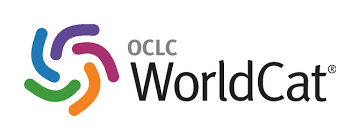Study on Conservation Threats on African elephant (Loxodonta africana, Blumenbach, 1797) in Babile Elephant Sanctuary, Eastern Ethiopia
DOI:
https://doi.org/10.47504/IJAGRI.2021.5175Keywords:
African elephant, Babile Elephant Sanctuary, Conservation threats, Eastern Ethiopia, Local communitiesAbstract
The focus of this paper is to study the conservation threats on African elephants in Babile Elephant Sanctuary, Eastern Ethiopia. A simple random sampling method was used to gather data from sampled households. Total of 138 households were selected for interview nearby the study area, and qualitative survey was collected. Focus group discussion and site observations were carried out. According to the result showed, all respondents (100%) were perceived that the population explosion around the sanctuary was increasing for encroaching the land. Following human population, settlement (89.13%), human-elephant conflict (87.7%), and agricultural expansion (87%) through deforestation (84.7%) were the major threats that faced the sanctuary. The result also revealed that livestock grazing, charcoal production, poaching, less community participation, ineffective law enforcement, illegal (uncontrolled) fire, excavation of sands, and fuelwood collection were other discerned threats. Besides, less than (45%) of them were believed as hunting (i.e., other than elephants), lack of management capacity, ineffective stakeholders & partners involvement were brought less effect on present elephant conservation when related with other threats. However, only 22% of respondents were agreed with the existing management system. This might showed why the increased number and types of threats were observed in the sanctuary. Overall, this study disclosed the existence of conservation threats. Based on research results, the following inference is drawn: awareness creation for local communities and other stakeholders along with benefit-sharing for nearby communities around the sanctuary is important to lower the threats then conserve and protect elephant habitat and the values of the sanctuary. Moreover, strengthening the capacity of management and enforcing laws can minimize the intimidation and enhance opportunities.
References
Anteneh Belayneh (2006). Floristic description and Ethno botanical study of the natural vegetation in Babile Elephant Sanctuary, Ethiopia. M.Sc. Thesis, Addis Ababa University, Ethiopia.
Anteneh Belayneh, Sebsebe Demissew (2011). Diversity and population structure of woody species browsed by elephants in Babile Elephant Sanctuary, eastern Ethiopia: an implication for conservation, Agriculture and Forestry, 3(1), 20-32.
Ashenafi, Z.T., T. Coulson, C. Sillero-Zubiri and N. Leader-William (2005). Behavior and ecology of the Ethiopian wolf (Canissimensis) in a human-dominated landscape outside protected areas. Animal Conservation, 8(2), 113-12
Bal, P., Nath, C.D., Nanaya, K.M., Kushalappa, C. G and Garcia C. G. (2011). "Elephants also like coffee: Trends and drivers of human-elephant conflicts in coffee agroforestry landscapes of Kodagu, Western Ghats, India, Environmental Management, 47(5), 789–801
Berry L. (2003). Land degradation in Ethiopia: its impact and extent in Berry L, Olson J. and Campbell D(Ed): Assessing the extent, cost, and impact of land degradation at the National level: dinding and lessons learned from seven pilot case studies. Commissioned by a global mechanism with support from the World Bank
Binggli P, Desissa D (2003). Ethiopian wildlife and natural history society. Newsletter: 4-6.
Blanc, J. (2008). Loxodonta africana. The IUCN Red List of Threatened Species
Blumenbach, J. F. (1797). "2. Africanus". Handbuch der Naturgeschichte [Handbook of Natural History] (Fifth ed.). Göttingen: Johann Christian Dieterich. p. 125.
Carey C., Nigel Dudley and Sue Stolton (2000). The importance and Vulnerability of the worlds Protected Areas
Crowley, E. L. (1997). Rapid data collection using wealth ranking and other techniques. International Center for Research in agroforestry and Tropical soil Biology International Centre and Fertility Program. 16pp
Demel Teketay (1995). Floristic composition of Daketa Valley Southeast Ethiopia: An implication for the biodiversity. Mountain Research and Development, 15(2), 183–186
Desalegn Wana (2004). "Strategies for Sustainable Management of Biodiversity in the Nechsar National Park, Southern Ethiopia". A Research Report Submitted to Organization for Social Science Research in Eastern and Southern Africa (OSSREA): Addis Ababa.
Duckworth, F.W. (2002). An assessment of Ethiopia's wildlife situation. Ethiopian Reporter, Ethiopia.
Ethiopian Wildlife and Natural History Society (EWNHS) (1996).Important Bird Areas of Ethiopia.A first inventory. Addis Ababa.300 pp.
FDRE/CSA (2013). Federal Democratic Republic of Ethiopia Central Statistical Agency
Hillman, J.C. (1993). Ethiopia: Compendium of wildlife conservation information. Ethiopian Wildlife Conservation Organization and New York Zoological Society.
Kothari, C.R. (2004). Research Methodology: Methods and techniques Second edition. New age international publishers, New Delhi, India
Mihret Ewnetu, Fedlu Abdela, Aklilu Kebede, Roman Kassahun, Hailu Mecha, Wondossen Sissay (2006). An overview of wildlife status, habitat conditions in the threats of Babile Elephant Sanctuary, and possibilities of demarcation. Ethiopian Wildlife Conservation Authority
Mohr, P.A. (1964). The geology of Ethiopia. University College of Addis Ababa Press, Ethiopia.268 pp.
Negese Nako (2014). Challenges of protecting Protected Area in Ethiopia: The Case of Maze national Park, in SNNPR in Gamo Gofa Zone.
Santiapillai, C., Wijeyamohan, S., Bandara, G., Athurupana, R., Dissanayake, N. and Read, B. (2010). "An assessment of the human-elephant conflict in Sri Lanka," Ceylon Journal of Science (Biological Sciences), 39(1), 21–33.
SDPASE/EWCA- Sustainable Development Protected Areas System of Ethiopia and Ethiopia Wildlife Conservation Authority (2015). The Economic Value and Potential of Protected Areas in Ethiopia Conservation Strategy for Africa, Volume 1 Synthesis
Sintayehu W., Anteneh B., Sena, Mohammed., Kasshaye A., Fekede R., TibebeM.and Michael Chase (2016). Elephants (Loxodonta africana) Ecology and Conservation in Babile Elephant Sanctuary
Sintayehu Workeneh D. et al. (2014). Report on Ecology and conservation of elephant in Ethiopia project report, Haramaya University, Ethiopia
Sintayehu Workeneh, Uttama Reddy R. (2014). Conflicts between the conservation of Elephant and Human activities: In the case of Babile Elephant Sanctuary (BES), Ethiopia. J. Geog. Reg. Plan, 7(1), 25-29
Sitienei GJ and Ngene SM. (2014). "Assessing the cost of living with elephants (Loxodonta africana) in areas adjacent to Meru National Park, Kenya". Europ. J. Wild. Res., 60(1), 323–330
Solomon Abebe (2014). Use and Management of Protected Areas in Ethiopia: Multiple Stakeholder Analysis of Sustainable Resource Management at Awash National Park. Requirement for the degree of Doctor of Philosophy in Environmental Science, University of South Africa (UNISA).
Solomon Chanie and Dereje Tesfaye (2015). Threats of biodiversity conservation and ecotourism activities in Nechsar National Park, Ethiopia. International Journal of Biodiversity and Conservation, 7 (3), 130-139.
Soromessa Teshome (2007). Mountain resources and conflict instigating issues, Ethiopia. Department of Biology Education, Addis Ababa University, Ethiopia.
Stephenson, J. G. (1976). Reports on the Harer Elephant dilemma. EWCO, Addis Ababa, Ethiopia. Pp 22 + Maps.
Tahir Abdala, Yeneayehu Fenetahun (2017). Review on Floristic Diversity and Threatened Plant Species in Babile Elephant Sanctuary in East Hararge, Ethiopia, American Journal of Environmental Science and Engineering,1(1),1-6.DOI: 10.11648/j.ajese.20170101.11
United States Agency for International Development (USAID) (2008). Biodiversity Conservation and Crisis.
Vial F, Macdonald DW, Haydon DT (2011). Response of endemic afro-alpine rodents to the removal of livestock grazing pressure. Current Zoology, 57 (6): 741?750
World Bank (2011). Africa Development Indicators. Washington DC.
Yalden, D.W., M.J. Largen and D. Kock (1986). Catalog of the mammals of Ethiopia 6Perrissoddactyla, Proboscidea, Hyracoidea, Lagomorpha, Tubulidentata, Sirenia and Cetacea Monitore Zoologico Italiano (NS) Supplimento, 21(4), 31-103
Yihew Biru and Afework Bekele (2012). Food habits of African elephant (Loxodonta africana) in Babile Elephant Sanctuary, Ethiopia. International Society for Tropical Ecology,. 53(1), 43-52
Yirmed Demeke (2003). Law enforcement, illegal activity, and elephant status in Mago and Omo National Parks and adjacent areas, Ethiopia. Pachyderm, 1(1), 16-30
Yirmed Demeke (2008). The Ecology and Conservation of the relic elephant population in the Horn of Africa. Australia, Ph.D. The Thesis University of Melbourne, 1(1): 32-41
Yirmed Demeke, Marilyn, B.R, Roger, V.S. and Richard, F.B. (2006). The undisclosed facts about the relic elephant population in the Horn of Africa. Proceedings of Biological Society of Ethiopia, 16th annual conference and workshop. 13 pp.
Zelalem Wodu (2007). Elephant and anthropogenic impacts on Woody plant species in Babile Elephant Sanctuary, Eastern Ethiopia. MSc thesis, Addis Ababa University
Downloads
Published
Issue
Section
License
Copyright (c) 2021 Taye Lemma Geleta, Girma Mengesha

This work is licensed under a Creative Commons Attribution-NonCommercial 4.0 International License.





2.png)






 Home
Home